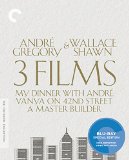| Reviews & Columns |
|
Reviews DVD TV on DVD Blu-ray 4K UHD International DVDs In Theaters Reviews by Studio Video Games Features Collector Series DVDs Easter Egg Database Interviews DVD Talk Radio Feature Articles Columns Anime Talk DVD Savant Horror DVDs The M.O.D. Squad Art House HD Talk Silent DVD
|
DVD Talk Forum |
|
|
| Resources |
|
DVD Price Search Customer Service #'s RCE Info Links |
|
Columns
|
|
|
Andre Gregory & Wallace Shawn: 3 Films
Theater becomes film
Reviewer's Bias*
Loves: Playwriting, The Criterion Collection, Jonathan Demme
Likes: Wallace Shawn, intimate films, Louis Malle
Dislikes: The work of Chekhov, the work of Ibsen
Hates: Ibsen's men
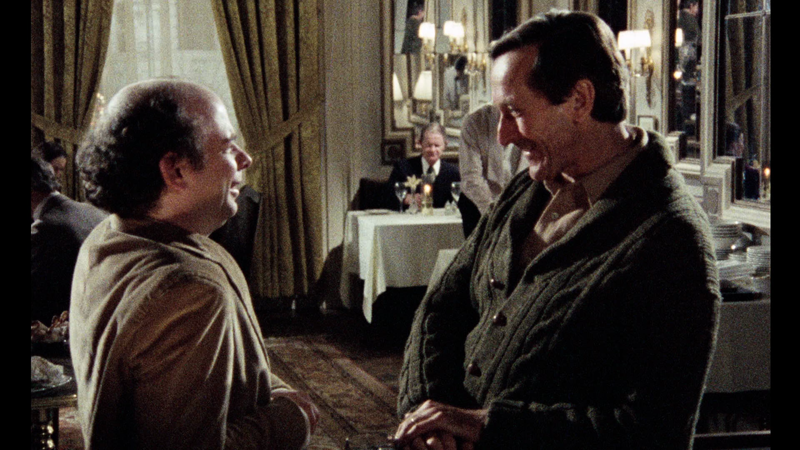
The Story So Far...
On and off for decades, theater director Andre Gregory and writer/actor Wallace Shawn have been working together on invite-only stage plays that have been adapted into memorable films, working with Louis Malle and then Jonathan Demme. In addition to a new release, "Andre Gregory & Wallace Shawn: 3 Films" collects two previous-released collaborations by the two men, as My Dinner with Andre arrived on DVD in June of 2009, while Criterion released Vanya on 42nd Street on Blu-ray in February of 2012. DVDTalk has reviews of each release: My Dinner with Andre | Vanya on 42nd Street
The Movies
I've never accepted that more theater isn't available on home video. Sure, you have your final performance of Rent and the occasional Shrek the Musical to enjoy, but there is a world of theatricality out there that becomes lost to time because video recordings aren't available. Sure, the best stage plays usually get adapted into films and some musicals make their way to Hollywood, while it will be argued that you can't capture the energy or feel of Broadway on film, or that film will cannibalize the already shaky finances of the Great White Way (not to mention touring companies), but one has to believe that if more people than those who can afford a night on Broadway could enjoy the big performers performing in the best shows, that the audience might grow.
Now, Gregory and Shawn (who is best known to mass audiences for his role in The Princess Bride) have not taken this tack with their collaborations. Instead of putting on a play and rolling the cameras to capture it, they put on the play, for small audiences of family and friends, exploring it over time, before eventually adapting it to a movie, with the assistance of masters in the field, taking full advantage of the medium in order to create something fresh and new. The results, seen in the three intimate films in this set, My Dinner with Andre, Vanya on 42nd Street and A Master Builder, are a tribute to the vitality of the stage and the art of film.
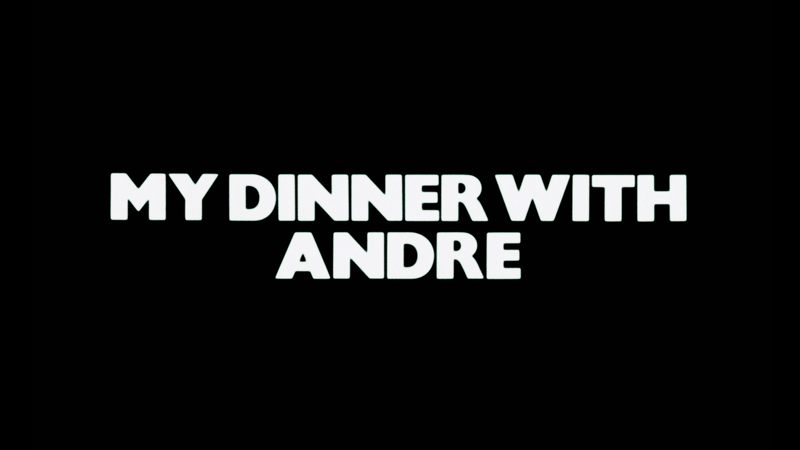
Their first film collaboration, 1981's My Dinner with Andre didn't follow the technique as much as the second and third films, but they were first starting out. Instead of preparing for the film by staging a play, they simply talked. The two men would record conversations, and from those tapes. a script emerged, the story of two old friends who hadn't seen each other in a long time, sitting down for dinner and conversation. It would become a cinema classic, an experimental "art" film that would inspire countless homages. With a cast of only three main characters, one of which doesn't speak more than a handful of short lines, the film takes place mostly in a single setting, as once seated for their meal, the two men never leave the table. At nearly two hours long, the possibility that two people talking while eating could become boring is very real, but with Shawn and Gregory doing the speaking, it's always riveting.
Part of why that is is the way the two men speak. Often, it's not really a conversation or a give-and-take. For most of the film, it's a series of monologues, with the briefest of responses, but the monologues, which touch on everything from love, life and death to Bertolt Brecht, The Little Prince and electric blankets, are consistently fascinating, building a definitive conflict between the two men. It becomes obvious that, at their cores, there is a philosophical schism between them, which is likely why they haven't been in touch, and why, as Shawn makes his way to dinner through a dingy early 1980s New York City, he dreads the occasion. Though unnatural in structure, as conversations tend to have more flow, the discussion between Gregory and Shawn's characters (an important distinction that is often overlooked) feels utterly genuine, no doubt a result of the development process and the acting ability of the two performers, particularly Shawn, whose slow burn into an inferno is always wonderful to watch.
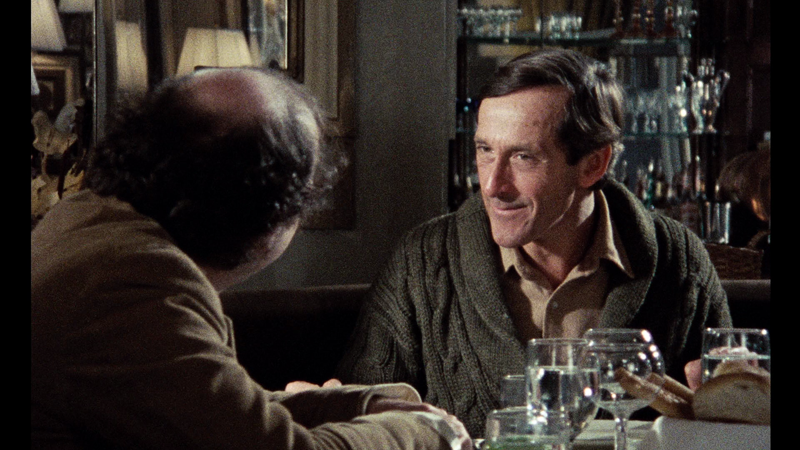
Though Gregory and Shawn are a big part of why this extended dinner date works as a film, credit must go to French New Wave director Louis Malle, who was following up on Atlantic City when he decided to tackle such an intimate concept. Filming two men who don't move very much, while seated for 90 percent of the film was a daunting challenge, but working with a few angles and constantly shifting distances from the actors, Malle keeps the film from becoming static, while also avoiding the temptation to spice up the visuals. The use of nearby mirrors is particularly effective in portraying the conversation in a single shot. Between the three men, they build an affecting and effective meditation on the meaning of life.
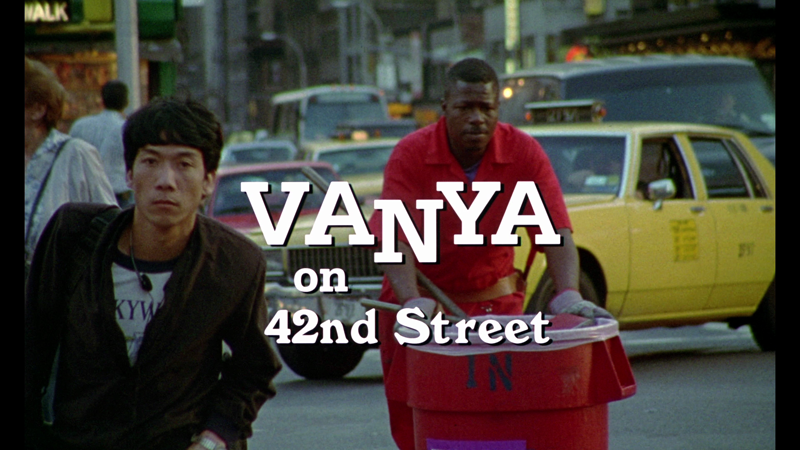
Malle returned to work with Gregory and Shawn in 1994 (for his final film as director), but this time, instead of a purely original work, they started with Anton Chekhov's Uncle Vanya, a play which ruminates on the value of purpose, as Serybryakov (George Gaynes) visits his country home and the staff that runs it, including Vanya (Shawn). The process of bringing it to the screen was no less intriguing though, as Gregory staged a production of the play based on a translation by playwright David Mamet,, and then that production became a film in the hands of Gregory, Shawn and Malle. What sets Vanya on 42nd Street well apart from virtually every other production of Uncle Vanya is its status as a meta film. Rather than capturing a performance of the play or showing the story play out in a traditional narrative manner, the film follows a rehearsal of the play, which takes place in a pre-The Lion King New Amsterdam Theater in New York City.
The run-down theater is the perfect setting in order to lend the rehearsal the sense of authenticity it wears so well. With no costumes, no sets and no elaborate staging, the world of the actors blends seamlessly with the world of the play, making conversations between characters feel like they are taking place between the cast members, giving Vanya a relevancy it hasn't had since the days of Chekhov himself. Unless you are quite knowledgeable of the play's dialogue, often you'll question whether what you're seeing is written or a part of the fictional world of the cast, with only the act breaks, which see the actors in a sliver of downtime, serving as obvious demarcations of fiction and fact. Otherwise, the drama may as well be "real".
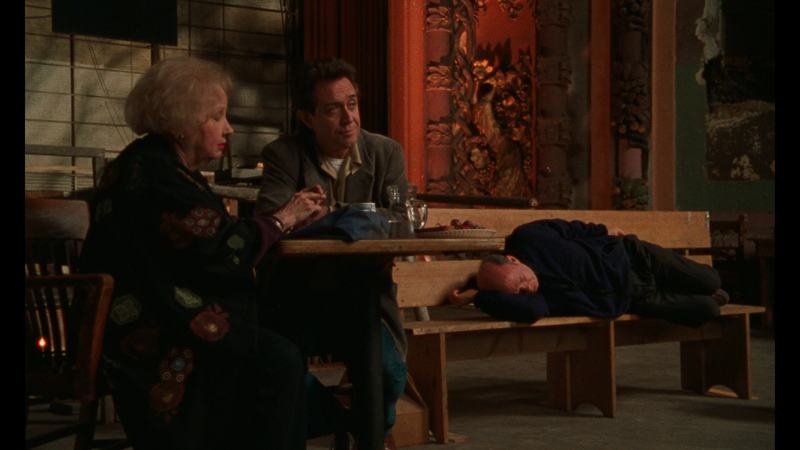
As with My Dinner with Andre, part of why that happens is thanks to the cast, as it is loaded with fantastic talents, led by Shawn, the criminally underrated Gaynes (best-known for Punky Brewster and Police Academy) and a powerful Brooke Smith, who plays the tragic Sonya, whose plain face is her downfall. However, it would be hard to miss Julianne Moore, in one of her early feature roles (between Short Cuts and Safe), as Yelena. The emotional core of the story, the young wife of Gaynes' professor, she is the engine of the plot, desired by the men around her, and seeing her here, it's easy to understand why. When emotions get the better of her, Moore shows why there isn't anyone in the industry better than her when it comes to crying on camera. Her performance makes you feel every ounce of her pain.
Chekhov can be hard to appreciate, thanks to the density of the Russian names (which often have two versions for a single character), while the world of the Russian aristocrat can be hard to relate to, but as translated by Mamet, and then Gregory and then Malle, it's easy to sink into the lives of Serybryakov, Vanya, Yelena and the others, while Malle's camera creates a documentary feel, aiding both the ease of access to the story and the meta feel. When the lights go down, it's not only the end of the story for the characters, but the performers as well.
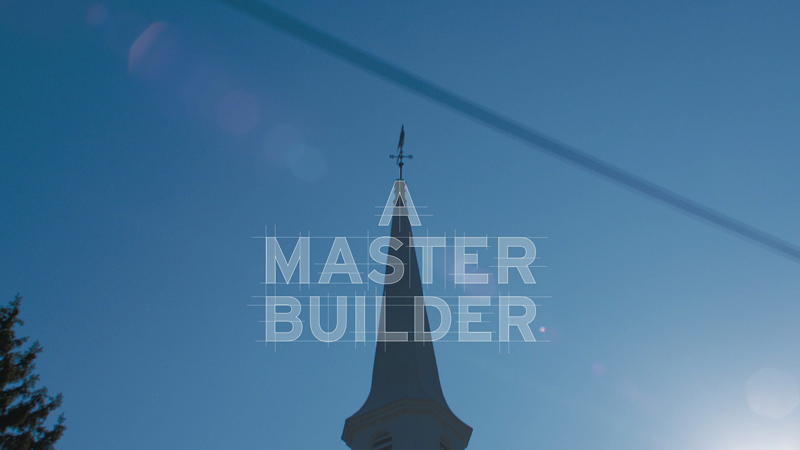
The latest collaboration between Gregory and Shawn, 2014's A Master Builder, is another adaptation of a European playwright of impermeable plays, as Henrik Ibsen's Master Builder Solness is brought to the 21st Century. The process was this same as it was with Vanya on 42nd Street, but this time it took over a decade to get the story before the cameras, and this time it was Jonathan Demme in charge, as Malle passed not long after he finished Vanya.
Demme does more of a classic film adaptation than Malle, somewhat straightforwardly telling the story of expert architect Halvard (Shawn), his long-suffering wife Aline (Julie Hagerty) and a young woman just come to town named Hilde (Lisa Joyce). As this is an Ibsen work, the man in the middle, a man of eternal ego, is insufferable, and everyone else is miserable because of him, including his overly-capable assistant, his old rival/employee (Gregory) and his trod-upon bookkeeper/side piece (who happens to be his assistant's fiancee.) No one is happy in this world, and with good reason.
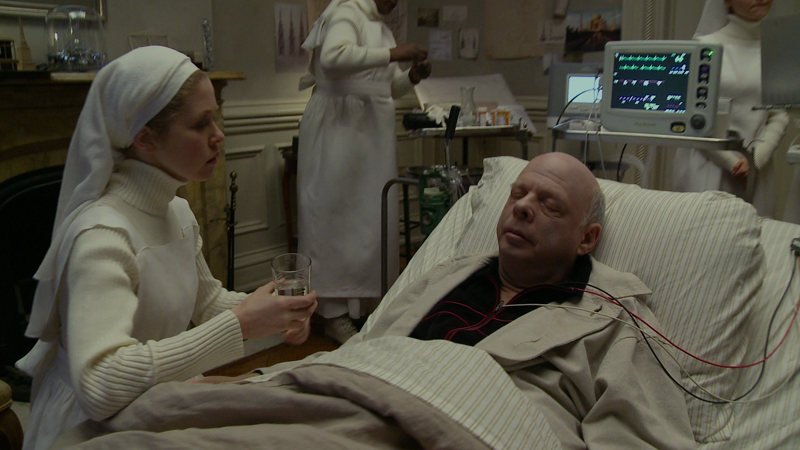
While Demme's production is rather traditional (outside of a use of handheld camera which ups the immediacy), the real tricks were in the adaptation by Shawn, who made an interesting decision in changing the structure of the play, removing an impractical, and frankly telegraphed climax and reducing the focus on Halvard possibly possessing supernatural powers. In doing so, Shawn changed the entire feel of the play, making it far more satisfying, and possibly more intriguing depending on whether you share certain theories as to what is happening. As a result, the film now rewards multiple viewings, as one attempts to discern what may have been happening in the course of the film.
Whether you want to get all Lost on the plot, there's no denying the power of the performances, with the three leads impressing. After watching Shawn in the other two films, that he can portray a man of oversized ego and heightened emotion well is obvious, with this role simply confirming it, while Hagerty manages to overcome her career-defining first role in the Airplane! films with a finely-tuned performance here. Joyce, who made several appearances on Boardwalk Empire, has the biggest impact though, as her Hilde is many things at once, from an emotionally-scarred girl to a bewitching temptress to a raging lunatic. A striking beauty, her intense performance allows her to snatch attention in a way that makes you believe that Halvard could become enchanted by her character, while at the same time, Hilde's relationship with Aline remains believable. Though Hilde's last few lines were a better fit for Wet Hot American Summer, up to that point, it was a well-done adaptation of a notoriously audience-unfriendly playwright.
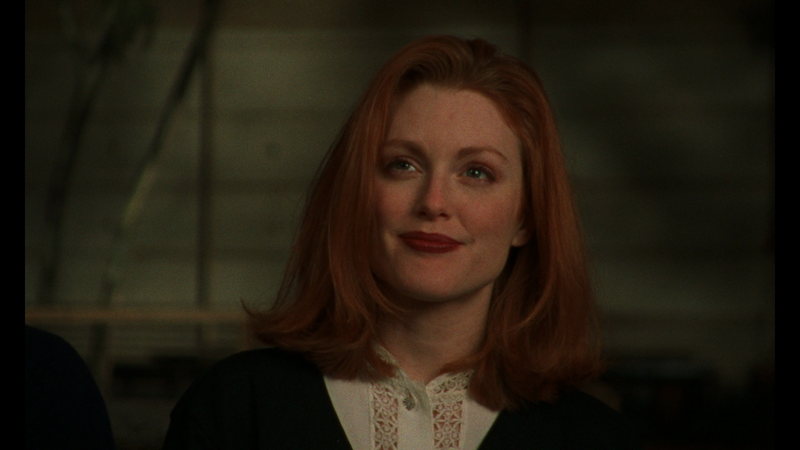
The Discs
The films arrive on thee Blu-ray discs, which are packed in a trio of Criterion's standard clear Blu-Ray keepcases, each with a two-sided cover and an insert. The three cases are held in an attractive yet somewhat flimsy cardboard slipcase. Three static versions of Criterion's gorgeous menu system are offered up, with choices to watch the movie, select scenes, view the timeline and check out the extras. There are no audio options, while subtitles are available in English.
The Quality
The relative quality of the 1080p, AVC-encoded transfers improves as they come closer to today, with My Dinner with Andre looking the least pristine, but even so the image is solid, with impressive fine detail, appropriate, if slightly muted color and a lack of any digital distractions or noticeable dirt or damage. The only strike against it is a slightly high level of film grain, which makes the image look noisy, especially when viewed up close. Vanya on 42nd Street cuts down on the grain a bit, looking a bit more pleasing, but otherwise maintains the same positives, with a good amount of fine detail and a very warm color palette that's not marred by either compression artifacts or damage to the film. The more recent A Master Builder is essentially pristine, with a sharp, crisp transfer that offers dead-on color and high detail, while suffering from no obvious defects. Overall, considering the age and origin of these films, this set looks great.
The audio ranges from a LPCM 1.0 track on My Dinner with Andre to Vanya on 42nd Street's LPCM 2.0 audio, while A Master Builder sports a DTS-HD Master Audio 5.1 presentation. Neither My Dinner with Andre or Vanya on 42nd Street offer anything particularly challenging in terms of the audio, so the clean, strong tracks are more than enough to ensure the films sound right. For the more modern A Master Builder, the mix utilizes the surround speakers to boost the score, while also hosting some spillover from the center channel's dialogue, with all the elements maintaining a proper separation. No distortion is evident in any of the sound.
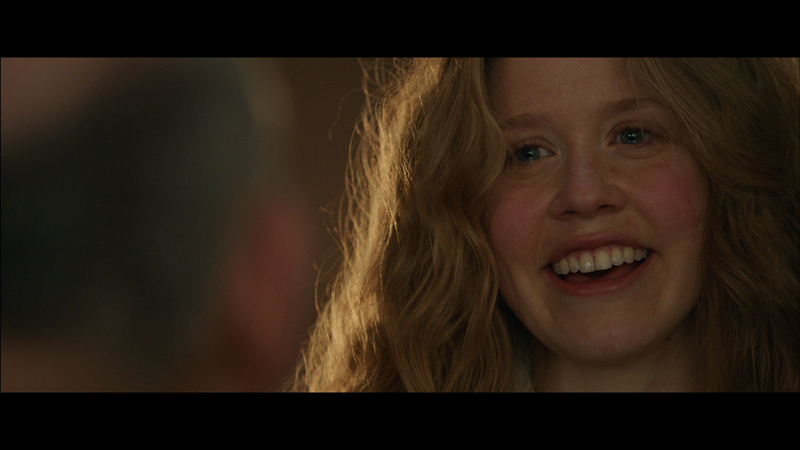
The Extras
The first film in the set offers a pair of extensive extras, starting with a pair of interviews with Gregory and Shawn, individually, conducted by writer/director Noah Baumbach (1:00:35). Though separate, the two chats combine to cover their shared collaborative process and offer details on the film, including their director wish list (before Malle came onboard) and talk of a sequel, while also featuring personal touches, like Gregory's adventures in high fashion and Shawn's admissions of being a bad collaborator.
The second extra is a 1982 episode of the BBC series Arena (52:42), featuring Shawn interviewing Malle in Atlantic City. Loaded with clips from Malle's work (one might say too many, with accusations of padding), the interview looks at Malle's films up until My Dinner with Andre, and touches on his early work with Jacques Cousteau, the controversies his work engendered, and the time he spent in India. Despite his place in the film pantheon, Malle comes off as considerably down-to-earth, and his English is easy to understand, making for an enjoyable interview.
Vanya on 42nd Street is the least plentiful disc when it comes to extras, but what's included is good, as we get "Like Life: The Making of Vanya on 42nd Street", a 35:42 featurette full of interviews with Gregory, Shawn, Moore, Gaynes, Smith, Lynn Cohen, Larry Pine, and producer Fred Berner. The rehearsals are obviously a key element, along with Mamet's work, improvisation, the famous people who saw the play in process, being directed by Malle and the influence of Ruth Nelson on the play.
A full-frame trailer (2:14) is also included, which actually hides the film's meta concept.
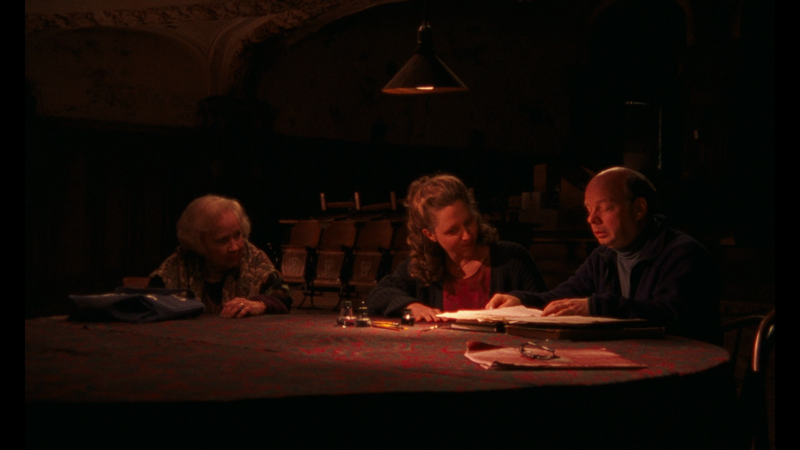
The newest film gets the most extras, with a pair of multi-participant interviews. First up, critic David Edelstein sits down with Shawn, Gregory and Demme, all together, for The Ibsen Project (33:41). Over the course of the interview they discuss all of the elements that make up the film, including the origin of Demme's involvement, the changes introduced in adaptation, and, naturally, the development process, as well as the differences between film and theater.
In the other piece, Hagerty and Joyce take part in Hilde and Aline (33:09), during which they talk about rehearsal, working with Gregory, Shawn and Demme, the advantages that film has over the stage and how their characters relate to Halward and to each other. Without an interviewer involved, this featurette becomes more personal and conversational, making it an entertaining watch,
Acting as an overview of sorts for the set as a whole is Over Time (52:52), a conversation between Shawn, Gregory and author Fran Lebowitz, covering the breadth of the men's collaboration. A friendly, erudite chat, it touches on the craft of writing, what it's like for them to work together, the differences between acting and writing, misconceptions about My Dinner with Andre, the timeless appeal of Chekhov and Ibsen and why one creates in the world as it stands. One of the better interviewers out there, Lebowitz injects her own style without taking away focus from her subjects, and asks more interesting questions than the norm.
Also included is the moody 2:13 trailer for A Master Builder.
As is usually the case, there are print inserts for all three films. My Dinner with Andre boasts a 32-page booklet printed in the format of an old manuscript, with fake brads and ink that rubbed off on the facing page. Aside from the usual disc details, there's an essay by Film Comment's Amy Taubin, who breaks down the film, scene by scene, along with the intros Gregory and Shawn wrote for for the original printed run of screenplays, in which they reveal how the film came to be. All three are well worth a read. The booklet for Vanya on 42nd Street is a bit thinner, at 24 pages, with stills, an in-depth analysis of the film by author Steven Vineberg, and a 1994 article from the film's set by Taubin. Bringing up the rear is A Master Builder's 12-panel fold-out, which offers an essay on the film by Film Comment's Michael Sragow.
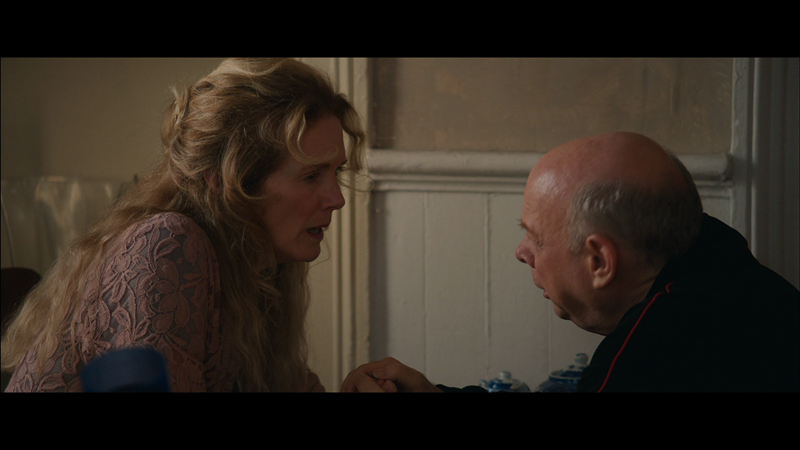
The Bottom Line
Three classic stories connected to the stage are presented in one set here, a pile of impressive writing and performances, led by the clever and powerful display of Chekhov's Uncle Vanya and the vibrant A Master Builder, while the immortal My Dinner with Andre trails slightly behind, simply due to the film's simplicity, not its originality and craft. It's certainly hard to stack up to the kind of brilliance on display in the adaptations. The presentations are solid overall, while the extras are relatively light in quantity, however they are sufficiently deep in quality, making this a set for fans of both stage and screen.
Francis Rizzo III is a native Long Islander, where he works in academia. In his spare time, he enjoys watching hockey, writing and spending time with his wife, daughter and puppy.Follow him on Twitter
*The Reviewer's Bias section is an attempt to help readers use the review to its best effect. By knowing where the reviewer's biases lie on the film's subject matter, one can read the review with the right mindset.
|
| Popular Reviews |
| Sponsored Links |
|
|
| Sponsored Links |
|
|
| Release List | Reviews | Shop | Newsletter | Forum | DVD Giveaways | Blu-Ray | Advertise |
|
Copyright 2024 DVDTalk.com All Rights Reserved. Legal Info, Privacy Policy, Terms of Use,
Manage Preferences,
Your Privacy Choices | |||||||









